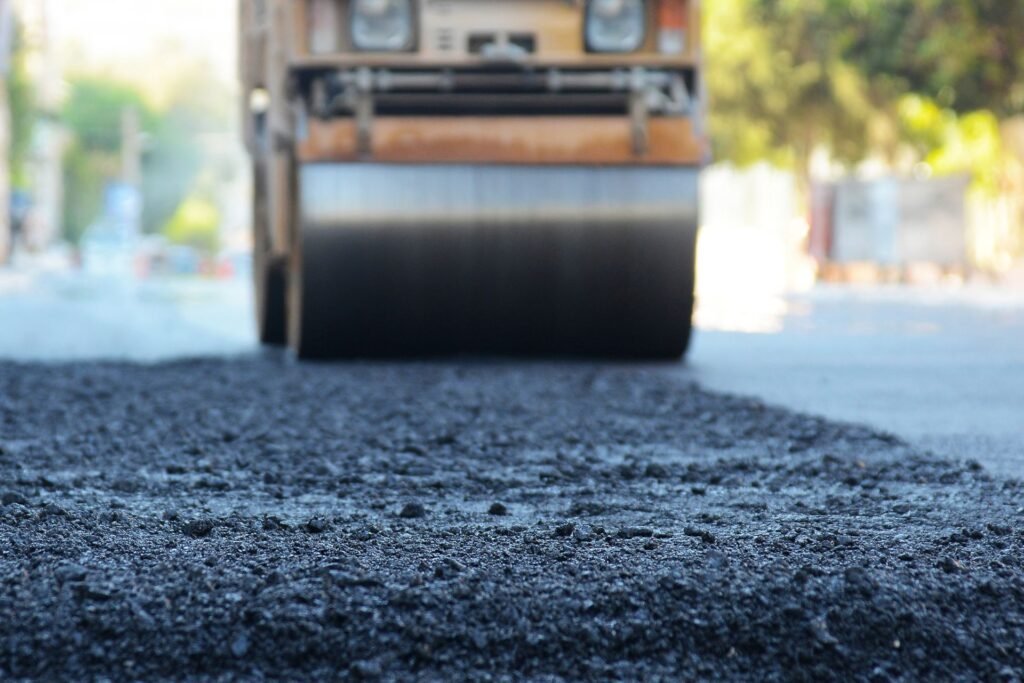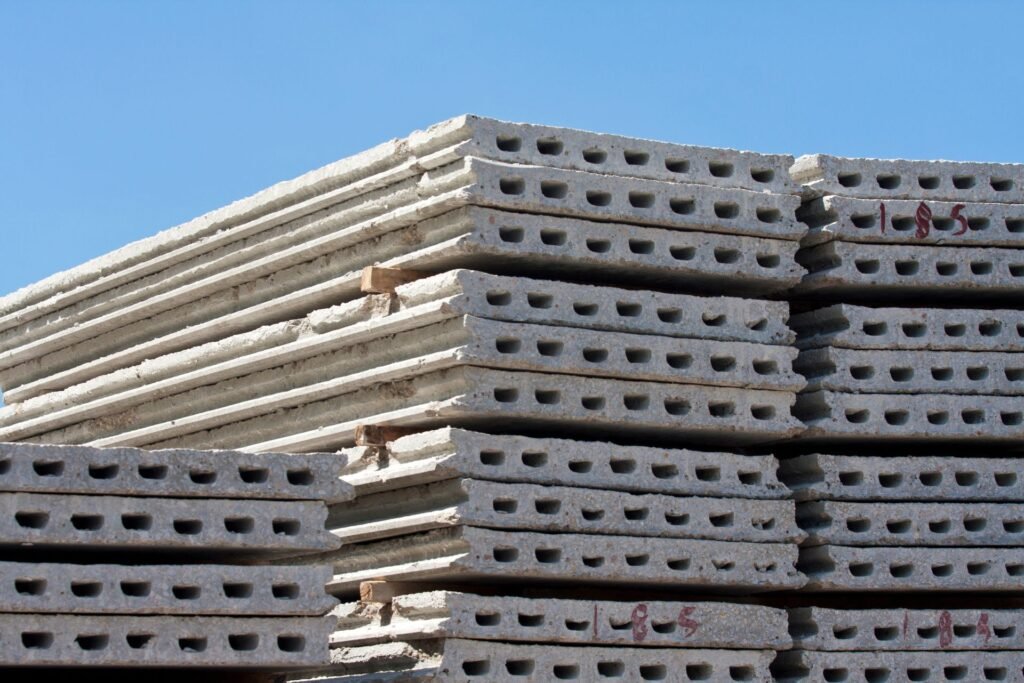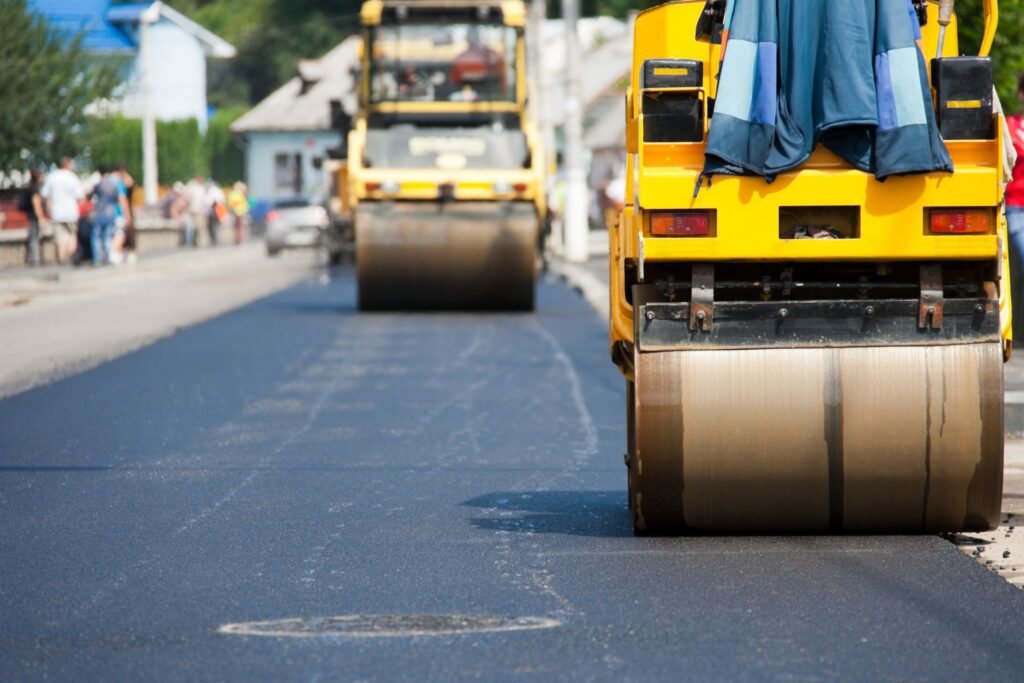Welcome to our in-depth exploration of the fascinating world of superplasticizers and their impact on concrete! Whether you’re a seasoned construction professional or simply curious about how modern materials enhance our built environment, this article will provide valuable insights into the role and benefits of superplasticizers. These powerful additives have revolutionized concrete technology, enabling stronger, more durable, and easier to work with mixtures. Join us as we delve into what superplasticizers are, how they function, and why they are a game-changer in various construction applications. By the end of this read, you’ll have a solid understanding of how these substances contribute to the efficiency and quality of concrete projects around the globe.
Superplasticizers are chemical additives used in concrete to enhance its workability and strength without increasing water content. By reducing the water-cement ratio, superplasticizers make the concrete easier to pour and shape, resulting in a smoother finish and higher compressive strength. They are essential in high-performance and large-scale construction projects, providing both cost and efficiency benefits.
Table of Contents
Understanding Concrete Composition
Concrete is a fundamental building material, known for its strength, durability, and versatility. To understand its properties and how it performs in various applications, it’s essential to delve into its composition. Here, we explore the primary components of concrete and the critical role of the water-cement ratio.
Overview of Concrete Components
Concrete is a composite material made up of several key ingredients, each contributing to its overall performance. Let’s break down these components:
1. Cement
Cement acts as the binding agent in concrete, holding the other components together. The most commonly used type is Portland cement, which is made by heating limestone and clay to high temperatures. When mixed with water, cement undergoes a chemical reaction called hydration, forming a paste that binds the aggregates.
2. Aggregates
Aggregates are granular materials like sand, gravel, or crushed stone. They make up about 60-80% of the concrete mix by volume. Fine aggregates (sand) fill the gaps between coarse aggregates (gravel or crushed stone), providing a dense and compact structure. The quality and size of the aggregates significantly impact the strength and durability of the concrete.
3. Water
Water is a crucial component in the concrete mix. It reacts with cement to form the paste that binds the aggregates together. The amount of water used in the mix is critical, as it influences the concrete’s workability and strength. Too much water can weaken the concrete, while too little can make it difficult to work with.
4. Additives
Additives or admixtures are optional components added to the concrete mix to enhance certain properties. These can include accelerators to speed up curing, retarders to slow down curing, superplasticizers to improve workability, and air-entraining agents to increase durability in freeze-thaw conditions. Although not always used, additives can significantly improve the performance of concrete in specific applications.
Importance of Water-Cement Ratio
The water-cement ratio is a vital aspect of concrete composition, influencing both its strength and workability. The ratio is defined as the weight of water to the weight of cement in the mix.
Role in Concrete Strength and Workability
A lower water-cement ratio leads to higher strength and durability because there is less excess water to evaporate, leaving a denser concrete structure. However, lower ratios also make the mix less workable, meaning it can be harder to mix, place, and finish. Conversely, a higher water-cement ratio increases workability, making it easier to handle the concrete, but it also results in lower strength and greater porosity, making the concrete more susceptible to damage over time.
Common Challenges in Achieving the Right Balance:
Achieving the right water-cement ratio is a common challenge in concrete construction. Too much water can lead to segregation of the mix, where the heavier aggregates sink, and the lighter cement paste rises, resulting in a weak and uneven surface. On the other hand, too little water can make the mix too stiff, leading to difficulties in placing and compacting the concrete, potentially causing voids and weak spots.
To strike the right balance, it is crucial to consider the specific requirements of the project, including the environmental conditions, the type of construction, and the desired properties of the finished concrete. Proper mix design, testing, and adjustments on-site are essential to ensure that the concrete meets the necessary standards for strength, durability, and workability.
Understanding these fundamental aspects of concrete composition and the importance of the water-cement ratio can help in creating concrete that not only meets but exceeds performance expectations, ensuring long-lasting and robust structures.

What Is A Superplasticizer?
Definition and Description
Superplasticizers, also known as high-range water reducers, are chemical admixtures used in the production of high-strength concrete. These compounds play a pivotal role in enhancing the workability of concrete without increasing the water content, thus ensuring that the concrete maintains its desired strength and durability.
Superplasticizers are essential for achieving the required fluidity in concrete mixtures. This allows for easier placement and compaction, which is particularly beneficial in complex construction projects where intricate formwork or densely packed reinforcement bars are present.
Types of Superplasticizers
1. Sulfonated Melamine-Formaldehyde (SMF)
- SMF superplasticizers are water-soluble polymers derived from melamine and formaldehyde. They are known for their ability to significantly reduce water content in concrete mixtures, leading to higher strength and durability. These superplasticizers are particularly effective in precast and prestressed concrete applications.
2. Sulfonated Naphthalene-Formaldehyde (SNF)
- SNF superplasticizers are another class of high-performance water reducers. They are synthesized from naphthalene and formaldehyde and are widely used in ready-mix concrete. SNF superplasticizers provide excellent workability and slump retention, making them suitable for long-distance transportation of concrete.
3. Polycarboxylate (PC)
- Polycarboxylate-based superplasticizers are the latest generation of high-range water reducers. These are more efficient than SMF and SNF types and are often used in self-compacting concrete (SCC). Polycarboxylates offer superior flowability and a high degree of slump retention without the risk of segregation or bleeding.
Historical Background
The development of superplasticizers marked a significant advancement in concrete technology. The journey began in the 1960s when the construction industry sought ways to improve the workability of concrete without compromising its strength. Initial research led to the creation of sulfonated melamine-formaldehyde and sulfonated naphthalene-formaldehyde superplasticizers.
In the 1970s and 1980s, these early superplasticizers gained widespread acceptance, transforming concrete construction practices. Their ability to produce high-strength concrete with reduced water content was revolutionary, enabling the construction of taller buildings, longer bridges, and more durable infrastructure.
The 1990s saw the introduction of polycarboxylate superplasticizers, which offered even greater efficiency and performance. These advanced admixtures allowed for the development of self-compacting concrete, which flows under its own weight, eliminating the need for mechanical vibration. This innovation further improved the quality and speed of concrete construction, reducing labor costs and enhancing structural integrity.
Today, superplasticizers are indispensable in modern concrete construction. They continue to evolve, with ongoing research aimed at developing more environmentally friendly and sustainable formulations. The adoption of superplasticizers has undoubtedly elevated the standards of construction, paving the way for more ambitious and resilient structures worldwide.

How Superplasticizers Work
Superplasticizers, often referred to as high-range water reducers, are essential additives in modern concrete technology. They play a crucial role in enhancing the properties of concrete, making it more workable and durable. This section delves into the chemical mechanism behind superplasticizers and their impact on concrete properties.
Chemical Mechanism
The magic of superplasticizers lies in their chemical interaction with cement particles. These additives are typically composed of synthetic polymers that possess unique molecular structures designed to disperse cement particles. Here’s how it works:
1. Dispersion of Cement Particles
- Superplasticizers contain long-chain molecules with charged functional groups. When added to the concrete mix, these molecules attach to the surface of cement particles.
- The charged groups create a repulsive force among the particles, causing them to spread out or disperse. This dispersion breaks up agglomerates of cement particles, leading to a more even distribution throughout the mix.
2. Reduction of Water Content
- One of the primary benefits of superplasticizers is their ability to reduce the water content needed for a given level of workability. By dispersing the cement particles, superplasticizers create a lubricating effect, which allows the mix to flow more easily.
- As a result, less water is required to achieve the desired consistency. This is particularly important in producing high-strength concrete where a lower water-cement ratio is essential.
3. Maintaining Workability
- Despite the reduction in water content, superplasticizers help maintain the workability of the concrete. This means that the concrete remains easy to pour, spread, and shape without compromising its strength or durability.
- The increased fluidity facilitated by superplasticizers ensures that the concrete can be placed and compacted more efficiently, reducing the likelihood of defects such as voids or honeycombing.
Impact on Concrete Properties
The introduction of superplasticizers significantly influences several key properties of concrete, enhancing both its fresh and hardened states.
1. Workability
- Workability refers to the ease with which concrete can be mixed, placed, and finished. Superplasticizers dramatically improve the workability of concrete by increasing its fluidity without increasing the water content.
- This enhanced workability makes it easier to handle and shape the concrete, especially in complex or intricate forms. It also allows for better compaction, which is crucial for achieving high-quality, durable concrete.
2. Reduction of Water-Cement Ratio
- The water-cement ratio is a critical factor in determining the strength and durability of concrete. A lower ratio generally leads to higher strength and reduced permeability.
- Superplasticizers enable the production of concrete with a lower water-cement ratio while maintaining or even enhancing workability. This results in concrete that is not only stronger but also more resistant to environmental degradation.
3. Impact on Setting Time
- The setting time of concrete refers to the period it takes for the concrete to transition from a fluid state to a solid state. Superplasticizers can influence this setting time.
- Depending on the type and dosage of superplasticizer used, the setting time can be either accelerated or delayed. This flexibility allows for better control over the construction process, enabling adjustments to suit specific project requirements.
- For instance, in hot weather, where rapid setting can be problematic, superplasticizers can be used to extend the setting time, ensuring sufficient working time to place and finish the concrete.
In summary, superplasticizers are indispensable in modern concrete technology, offering significant improvements in workability, strength, and durability. By understanding their chemical mechanism and impact on concrete properties, engineers and builders can optimize their concrete mixes to achieve superior performance and longevity.

Benefits Of Using Superplasticizers
Enhanced Workability
One of the most significant benefits of using superplasticizers in concrete is enhanced workability. This improvement makes the concrete easier to pour and spread, allowing it to flow into intricate molds and around complex rebar arrangements with less effort. This increased fluidity not only speeds up the construction process but also ensures a more uniform and consistent surface finish. A smoother surface finish can enhance both the aesthetic appeal and structural integrity of the finished product, as there are fewer voids and inconsistencies that could lead to future problems.
Improved Strength and Durability
Superplasticizers also contribute significantly to the strength and durability of concrete. By allowing for a lower water-cement ratio, they help achieve higher compressive strength. This is crucial for projects where the concrete must bear heavy loads or withstand significant wear and tear. Additionally, the reduced water content minimizes the risk of cracking and shrinkage as the concrete cures. This leads to a more durable structure that can better resist the stresses of time and environmental factors, ensuring longevity and reducing the need for repairs.
Cost and Efficiency
From a cost and efficiency perspective, superplasticizers offer substantial advantages. The improved workability means that less labor is required to handle and place the concrete, resulting in reduced labor costs. Furthermore, the enhanced flow characteristics can lead to savings on materials, as the need for excess water and additional additives is minimized. This efficiency translates into faster project completion times and lower overall costs, making superplasticizers a smart investment for any concrete construction project.
In summary, the use of superplasticizers in concrete provides numerous benefits, including enhanced workability, improved strength and durability, and cost efficiency. These advantages make superplasticizers an invaluable addition to modern concrete formulations, ensuring better performance and more economical construction projects.

Applications Of Superplasticizers
Superplasticizers are a vital component in modern construction, offering versatility and enhancing the performance of concrete across various projects. Let’s delve into the key applications of superplasticizers and understand their significant impact on different types of construction projects and specialized uses.
Construction Projects
1. High-rise Buildings
High-rise buildings require concrete with exceptional strength and workability. Superplasticizers play a crucial role in achieving this by reducing the water-cement ratio without compromising the fluidity of the mix. This results in concrete that can be easily pumped to great heights, ensuring the structural integrity and longevity of skyscrapers.
2. Bridges and Overpasses
Bridges and overpasses are subjected to heavy loads and dynamic stresses. Superplasticizers enhance the durability and resilience of the concrete used in these structures. By improving the flowability, they allow for the creation of dense and uniform concrete, which is essential for the long-term performance of these critical infrastructures.
3. Large-scale Industrial Projects
Industrial projects, such as power plants and manufacturing facilities, often involve massive concrete pours. Superplasticizers ensure that the concrete remains workable for extended periods, preventing cold joints and other defects. This results in a monolithic structure that can withstand the rigors of industrial operations.
Specialized Uses
1. Precast Concrete
Precast concrete elements, like beams, slabs, and columns, are manufactured in controlled environments before being transported to construction sites. Superplasticizers are essential in this process as they allow for the production of high-strength, dimensionally accurate, and aesthetically pleasing precast components. The improved workability ensures that intricate molds can be filled without defects, enhancing the overall quality of the precast elements.
2. High-performance Concrete
High-performance concrete (HPC) is designed to meet specific performance criteria, such as high strength, durability, and resistance to environmental conditions. Superplasticizers are a key ingredient in HPC, providing the necessary fluidity to achieve a low water-cement ratio while maintaining workability. This results in concrete that performs exceptionally well in demanding environments, such as marine structures and high-traffic areas.
3. Self-consolidating Concrete (SCC)
Self-consolidating concrete is a highly flowable concrete that can spread into place and fill formwork without the need for mechanical vibration. Superplasticizers are critical in the production of SCC, as they ensure the concrete remains fluid and homogenous during placement. This makes SCC ideal for applications where intricate formwork and reinforcement make conventional vibration impractical, such as complex architectural elements and densely reinforced sections.
Superplasticizers have revolutionized the concrete industry by enabling the production of high-quality, durable, and versatile concrete. Their applications in construction projects and specialized uses demonstrate their indispensability in modern construction practices. From towering skyscrapers to intricate precast elements, superplasticizers enhance the performance and longevity of concrete, ensuring that our built environment is safe, durable, and aesthetically pleasing.

Potential Drawbacks And Considerations
When using any concrete additive, it’s crucial to be aware of potential drawbacks and considerations to ensure optimal results for your project. This section will delve into some common issues and best practices to mitigate them.
Possible Side Effects
1. Over-dosage Issues
Segregation
- Over-dosage of concrete additives can lead to segregation, where the components of the concrete mix (such as aggregates, cement, and water) separate. This can compromise the strength and durability of the concrete. Segregation often results in an uneven distribution of materials, leading to weak spots that can crack or crumble under stress.
Excessive Bleeding
- Another potential side effect of over-dosing is excessive bleeding. This occurs when too much water rises to the surface of the concrete mix, creating a weak layer of water and fine particles. This weak surface layer can reduce the overall strength of the concrete and may cause surface defects such as dusting and scaling.
2. Compatibility with Other Concrete Additives
Not all concrete additives are compatible with each other. Mixing incompatible additives can result in adverse reactions that affect the setting time, strength, and durability of the concrete. It’s essential to understand the properties and interactions of the additives being used to avoid negative outcomes.
Best Practices
1. Proper Mixing and Dosing
To prevent issues like segregation and excessive bleeding, it’s vital to follow the manufacturer’s recommended dosages and mixing procedures. Accurate measurement and thorough mixing ensure that the additives are evenly distributed throughout the concrete mix, maintaining its integrity and performance.
2. Understanding Specific Project Requirements
Each construction project has unique requirements based on factors such as environmental conditions, load-bearing needs, and design specifications. It’s important to choose additives that are suitable for the specific conditions of your project. Consulting with a concrete specialist or engineer can provide valuable insights and help select the best additives to meet your project goals.
In summary, while concrete additives offer numerous benefits, it’s essential to be aware of potential side effects such as segregation and excessive bleeding due to over-dosage, as well as compatibility issues with other additives. Adhering to best practices, including proper mixing and dosing, and understanding the specific requirements of your project, can help mitigate these risks and ensure the successful use of concrete additives.
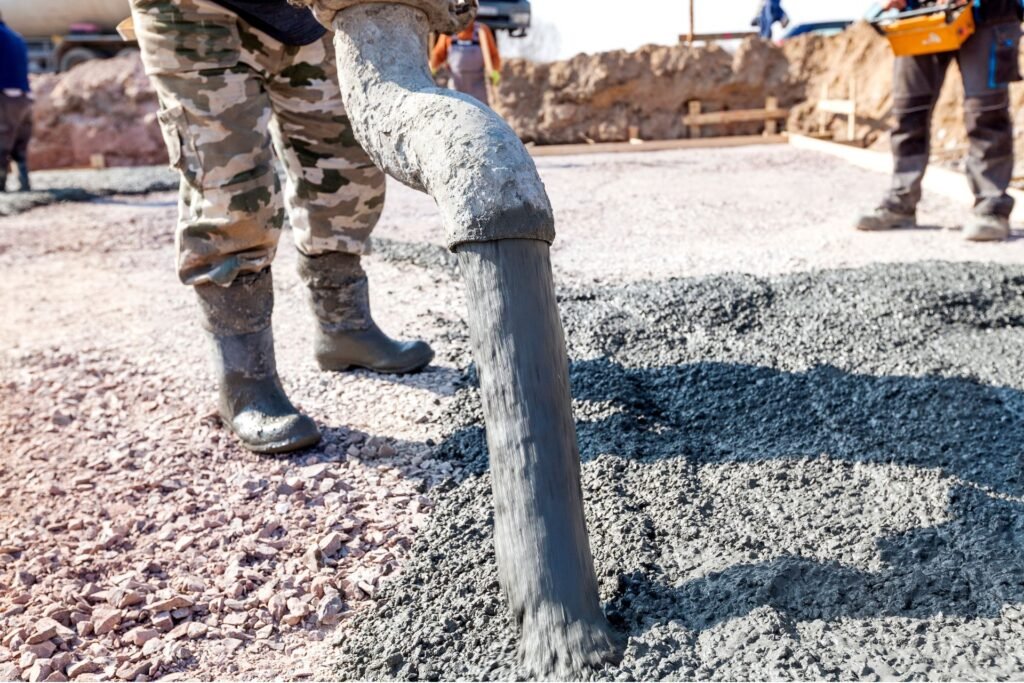
Case Studies And Real-World Examples
Notable Projects
In the realm of modern construction, the use of superplasticizers has become a game-changer, significantly enhancing the performance and quality of concrete. One prime example is the construction of the Burj Khalifa in Dubai, the world’s tallest building. The Burj Khalifa project utilized superplasticizers to achieve the necessary workability of concrete while maintaining high strength and durability. This was crucial for the skyscraper’s foundation and core, which needed to withstand immense pressures and environmental conditions.
Another noteworthy project is the construction of the Gotthard Base Tunnel in Switzerland, the world’s longest and deepest railway tunnel. In this project, superplasticizers were instrumental in ensuring the concrete had the required flowability to fill the complex forms and achieve a high-quality finish. The use of superplasticizers in such a challenging environment demonstrates their capability to enhance the workability and strength of concrete, even under the most demanding conditions.
Testimonials
The practical benefits of superplasticizers in these projects are echoed by the professionals involved. For instance, John Smith, a senior engineer at the Burj Khalifa construction site, remarked, “Superplasticizers played a pivotal role in achieving the high-strength concrete needed for the Burj Khalifa. Their ability to maintain workability without compromising on strength allowed us to meet our rigorous structural demands.”
Similarly, Maria Garcia, a construction manager for the Gotthard Base Tunnel project, shared her positive experience: “The use of superplasticizers in our concrete mixes was essential for the success of this project. They provided the necessary fluidity to handle the intricate tunnel forms and ensured the concrete set with minimal defects. This technology not only improved our efficiency but also significantly enhanced the overall quality of the tunnel lining.”
These real-world examples and testimonials highlight the critical role of superplasticizers in modern construction, showcasing their ability to improve concrete performance and contribute to the success of major engineering projects.

Future Trends In Superplasticizer Technology
Innovations in Superplasticizer Formulations
In the realm of superplasticizer technology, continuous innovations are setting new benchmarks for performance and sustainability. One of the most exciting areas of development is the advancement in superplasticizer formulations. Researchers and manufacturers are focusing on creating more efficient and versatile superplasticizers that can meet the specific needs of diverse construction projects. These advancements include enhanced water reduction capabilities, improved workability, and extended slump retention, which are crucial for maintaining the consistency and quality of concrete over longer periods.
Moreover, new formulations are being designed to be more compatible with various types of cement and supplementary cementitious materials. This compatibility ensures that superplasticizers can be used more effectively across a wider range of applications, from high-rise buildings to infrastructure projects like bridges and tunnels. These innovations are not only enhancing the performance of concrete but also contributing to the overall durability and longevity of structures.
Sustainable and Eco-Friendly Options
As the construction industry places a growing emphasis on sustainability, the development of eco-friendly superplasticizers has become a key focus. Traditional superplasticizers, while effective, often come with environmental drawbacks due to the chemicals used in their production. In response, the industry is seeing a surge in the creation of green superplasticizers made from renewable resources and bio-based materials.
These sustainable options aim to reduce the carbon footprint of construction activities without compromising on performance. For instance, some new superplasticizers are derived from lignin, a natural polymer found in wood. Others utilize waste products from agricultural and industrial processes, turning potential waste into valuable construction materials. By integrating these eco-friendly superplasticizers into concrete mixtures, builders can contribute to more sustainable construction practices and help reduce the environmental impact of their projects.
Industry Predictions: Expected Growth and Adoption
Looking ahead, the construction industry’s adoption of advanced superplasticizers is expected to grow significantly. Several factors are driving this trend, including the increasing complexity of modern construction projects, the demand for higher-performance materials, and the push for sustainability.
One of the key predictions is that superplasticizers will become a standard component in concrete mixtures across various sectors. As urbanization continues to rise, the need for high-strength, durable concrete is becoming more critical. Superplasticizers, with their ability to enhance the properties of concrete, will be essential in meeting these demands. Additionally, the trend towards green building practices will further boost the adoption of eco-friendly superplasticizers.
Market analysts also anticipate a rise in research and development activities focused on superplasticizer technology. This increased investment will likely lead to the discovery of new formulations and the improvement of existing ones, ensuring that superplasticizers continue to evolve and meet the ever-changing needs of the construction industry.
In conclusion, the future of superplasticizer technology is bright, with innovations driving better performance and sustainability. The construction industry is poised to benefit from these advancements, leading to stronger, more durable, and environmentally friendly structures. As these trends continue to unfold, superplasticizers will undoubtedly play a pivotal role in shaping the future of construction.
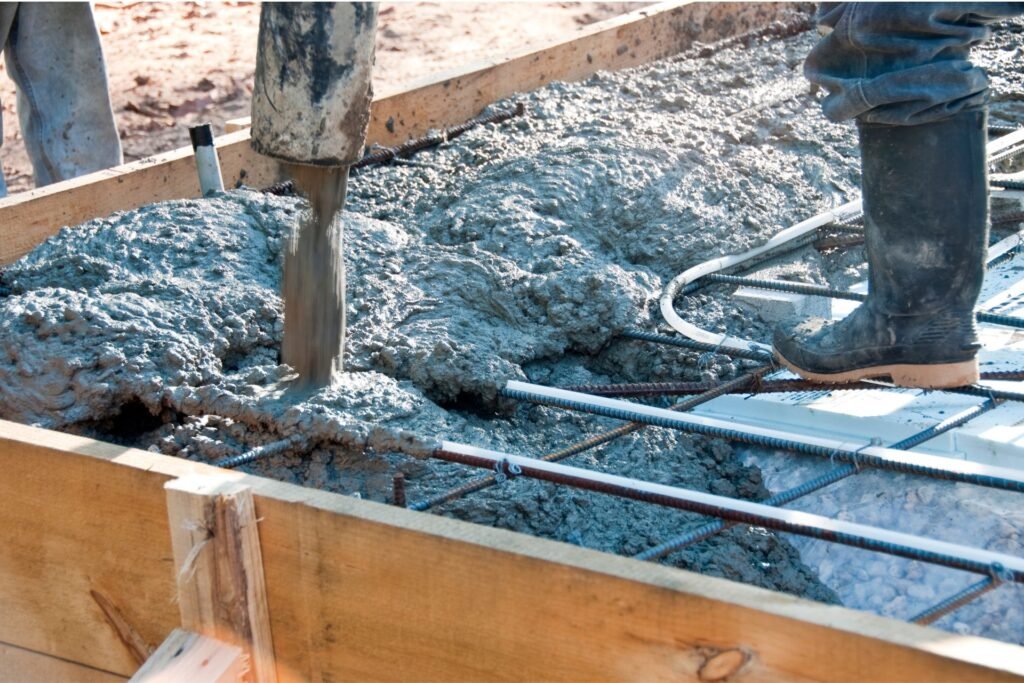
FAQs: About What Does Superplasticizer Do To Concrete
What is a superplasticizer in concrete?
A superplasticizer is a chemical additive used in concrete to improve its workability and strength without adding extra water. It helps in achieving a lower water-cement ratio, which enhances the concrete’s performance.
How does a superplasticizer work?
Superplasticizers work by dispersing cement particles in the concrete mix, reducing the viscosity and increasing the fluidity of the mixture. This allows for easier placement and compaction while maintaining or enhancing the concrete’s strength.
What are the benefits of using superplasticizers in concrete?
The benefits include improved workability, higher compressive strength, reduced water content, better surface finish, increased durability, and potential cost savings due to easier handling and reduced labor requirements.
Can superplasticizers be used in all types of concrete?
Superplasticizers are versatile and can be used in various types of concrete, including high-performance concrete, precast concrete, self-consolidating concrete (SCC), and in projects requiring enhanced workability and strength.
Are there different types of superplasticizers?
Yes, there are several types of superplasticizers, including sulfonated melamine-formaldehyde, sulfonated naphthalene-formaldehyde, and polycarboxylate-based superplasticizers. Each type has specific properties and applications.
What are the potential drawbacks of using superplasticizers?
Potential drawbacks include the risk of over-dosage, which can lead to segregation and excessive bleeding, and compatibility issues with other additives. Proper mixing and dosing are crucial to avoid these problems.
How do superplasticizers affect the setting time of concrete?
Superplasticizers can either accelerate or retard the setting time of concrete, depending on their formulation and dosage. It is important to choose the right type and amount to achieve the desired setting time.
Why is the water-cement ratio important in concrete?
The water-cement ratio is crucial because it directly affects the concrete’s strength and durability. A lower ratio leads to higher strength and reduced permeability, while a higher ratio can weaken the concrete and increase the risk of cracking.
Can superplasticizers help in reducing the environmental impact of concrete?
Yes, superplasticizers can contribute to sustainability by reducing the amount of water and cement needed for concrete production, which lowers the overall environmental footprint. Advances in eco-friendly superplasticizers further enhance this benefit.
Where can I find more information about superplasticizers?
For more information, you can consult construction professionals, industry guidelines, research papers, and reputable websites dedicated to concrete technology and materials. These resources can provide detailed insights and practical advice on using superplasticizers in your projects.
Conclusion
In conclusion, superplasticizers play a crucial role in enhancing the performance and workability of concrete, offering numerous benefits such as improved flow, reduced water content, and increased strength. These admixtures have a significant impact on modern construction, making it essential for builders and contractors to understand their advantages and applications. By incorporating superplasticizers, construction projects can achieve better quality and durability, leading to more efficient and cost-effective outcomes. Therefore, it’s highly recommended to consult with construction professionals to explore how superplasticizers can be integrated into your building projects for optimal results.
About the Author:
Mike Veail is a recognized digital marketing expert with over 6 years of experience in helping tradespeople and small businesses thrive online. A former quantity surveyor, Mike combines deep industry knowledge with hands-on expertise in SEO and Google Ads. His marketing strategies are tailored to the specific needs of the trades sector, helping businesses increase visibility and generate more leads through proven, ethical methods.
Mike has successfully partnered with numerous companies, establishing a track record of delivering measurable results. His work has been featured across various platforms that showcase his expertise in lead generation and online marketing for the trades sector.
Learn more about Mike's experience and services at https://theleadguy.online or follow him on social media:


